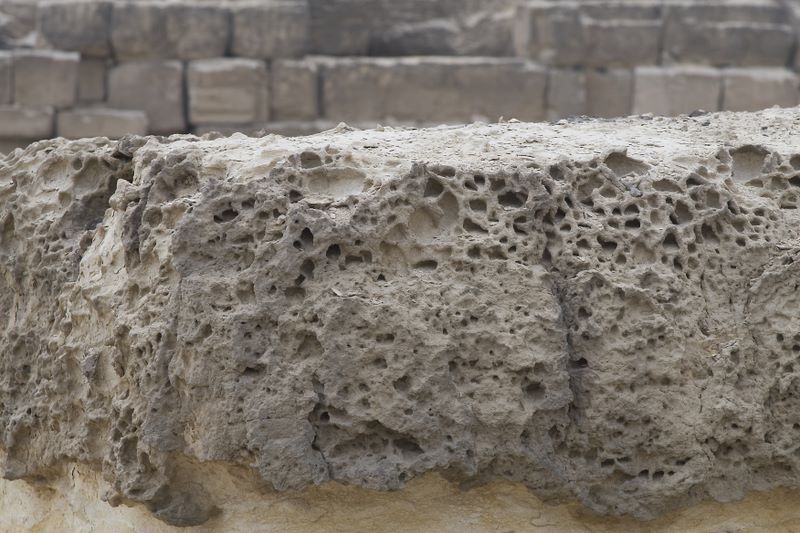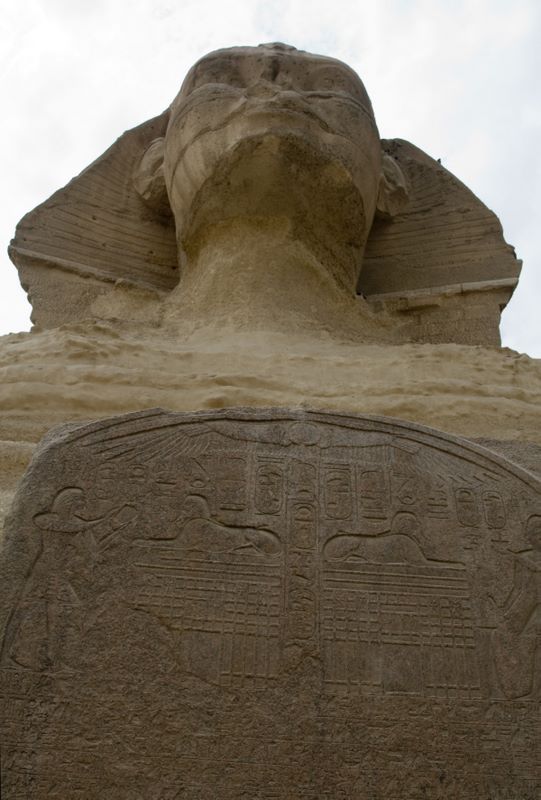For the last few weeks I have been spending some time doing some basic computer networking/repair/upgrade/de-virus-ing at the offices of one of the archaeological groups here in Cairo.
The group is responsible for the Giza Plateau Mapping Project(opens in new window). The director of the project is Mark Lehner.
The work isn’t particularly challenging, but it is great to have some non-AUC social contact. They are a very bright, hard working group of people. And they are interesting to talk with and listen to. An interesting mix of nationalities and disciplines.
One of the big benefits (to me) of working for them, is that I get invited on tours of the sites that they give to new arrivals to the project.
Mark Lehner has been in town the last few weeks and has given a couple of tours. One was a Sphinx tour.
I was a horrible host and deserted our house guests to go to this. I felt rather guilty for going. But I got over that once we started our tour. [A big thanks to Kaddee, who convinced me to go].
One of the interesting things that Mark talks about is the geology. He ran into a geologist, Tom Agner (now head of geology at Tubington) at Giza some 30 years ago. Mark tells the story something like this:
I saw this guy with a geologist’s pickaxe being frog-walked out of the area by a whole bunch of policemen. He had been picking at the ground and the walls of the sphinx enclosure with his pickaxe and examining what he pulled out. The police wasted no time in arresting him.
I told him I would try to get him out of trouble if he came to work for me. I did and he did.
Mark goes on to talk about what he learned from this geologist. No one had ever before really looked at the Sphinx or the rest of Giza geologically
.
The entire area was on the ocean bottom 50 million years ago or so. You can see in one of my photos the coral reef exposed near the base of the Sphinx. Oyster shells, tube worm holes and other shells are easily visible in the rock here if you just look.
The head of the Sphinx is a different composition than the shoulders and the lower body. Many people think that the head was attached to the body, but it is one big hunk of rock. The sea ebbing and flowing left mixed layers of soft and hard deposits. This is perfect for quarrying, you can cut the soft layer and pick off a large hunk of hard layer rock.
It seems that there was a huge lagoon/harbor that stopped a few meters from the base of the Sphinx. This is based on long ramps that have been found (and are now reburied) that go down about 20 meters from current ground level, to heavy, thick effluvial mud flats.
After our mini-geology lecture, we moved to the Temple of Amenhotep II and then on to the Stela between the paws of the Sphinx.

The Stela tells the story of Tutmoses’ dream. At the time of Tutmoses, the sphinx was buried in sand up to its head. Tutmoses fell asleep under the head and dreamed. The sphinx came to him in the dream and told him to “free my body from the sands and I will make you king”.
Tutmoses did as he was told and became king. There is some speculation that there was an older brother that was slated to be king. This brother disappears from the record and Tutmoses became king. Perhaps Tutmoses used this story to legitimize his reign. Who knows.
What is visible now of the sphinx’ body is covered with cement to keep it all together and prevent further weathering.
We looked at the elevation documents that the project has compiled over the years and walked around the entire sphinx.
There were many stories that Mark told. He would be a great guy to have a beer with, I would imagine.
One reply on “Twixt the paws”
Wow Jack! That must have been an absolutely incredible experience. And your right, without your commentary and the close up pics, why would anyone realize that the foot of the sphinx is made up ofr ancient coral. 🙂